The problems tackled by watch calibre designers are often extremely esoteric. The issues that must be overcome to bring a reliable movement to market are immense. Unlike many mechanical mechanisms, watches are temperamental beasts. Constructing a movement that works well over a long period of time would be far simpler if movements were, for example, ten times the size, but the realm of micro-mechanics is unforgiving. Simple solutions are rare and, even when a known flaw exists, they were often historically ignored on the balance of what they offered rather than what they did not.
 NOMOS Swing System - Copyright: NOMOS Glashütte
NOMOS Swing System - Copyright: NOMOS Glashütte
One such “known flaw” that exists in the vast majority of off-the-shelf watch movements, even today, is something I personally refer to as the “dead zone”. It pertains to watches fitted with a jumping date complication — an exceedingly common complication that is often taken for granted due to its ubiquity and desirable functionality.
The problem with “instant date change mechanisms” as they are often called, occurs roughly between the hours of 10 pm and 2 am. During this window (the “dead zone”), the jumping mechanism has started to engage in preparation for midnight, at which point (often a few minutes on either side depending on each individual brand’s internal standards), the date jumps over to the next day.
While the jumping components are engaged, you are strictly advised not to attempt quick-setting the date via the crown. Any attempt to do this while the delicate components involved in the transition from one to the next are in physical contact with one another can rip the teeth of the date wheel off (or, at least, shave small amounts of material from them). This can ultimately cause serious damage to your wristwatch. Not only could it render the date mechanism non-functional, but also the swarf — the small pieces of shaved metal that could be torn loose during manual setting within this time window — could migrate from their original position and interfere with the calibre’s safe operation. Worse still, these tiny pieces of metal could cause aesthetic damage to larger, more expensive components to replace, such as the bridges or even the mainplate of the movement.
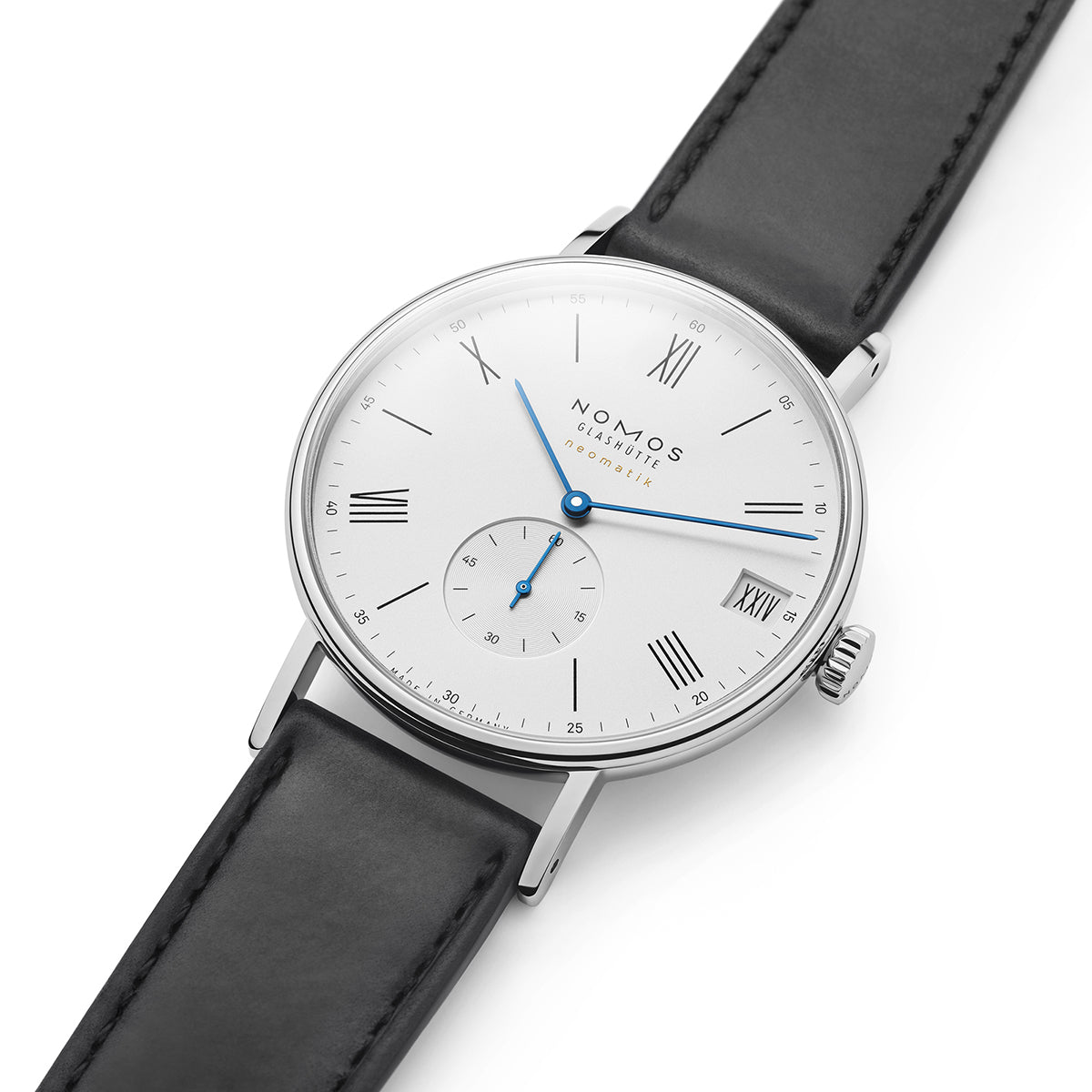
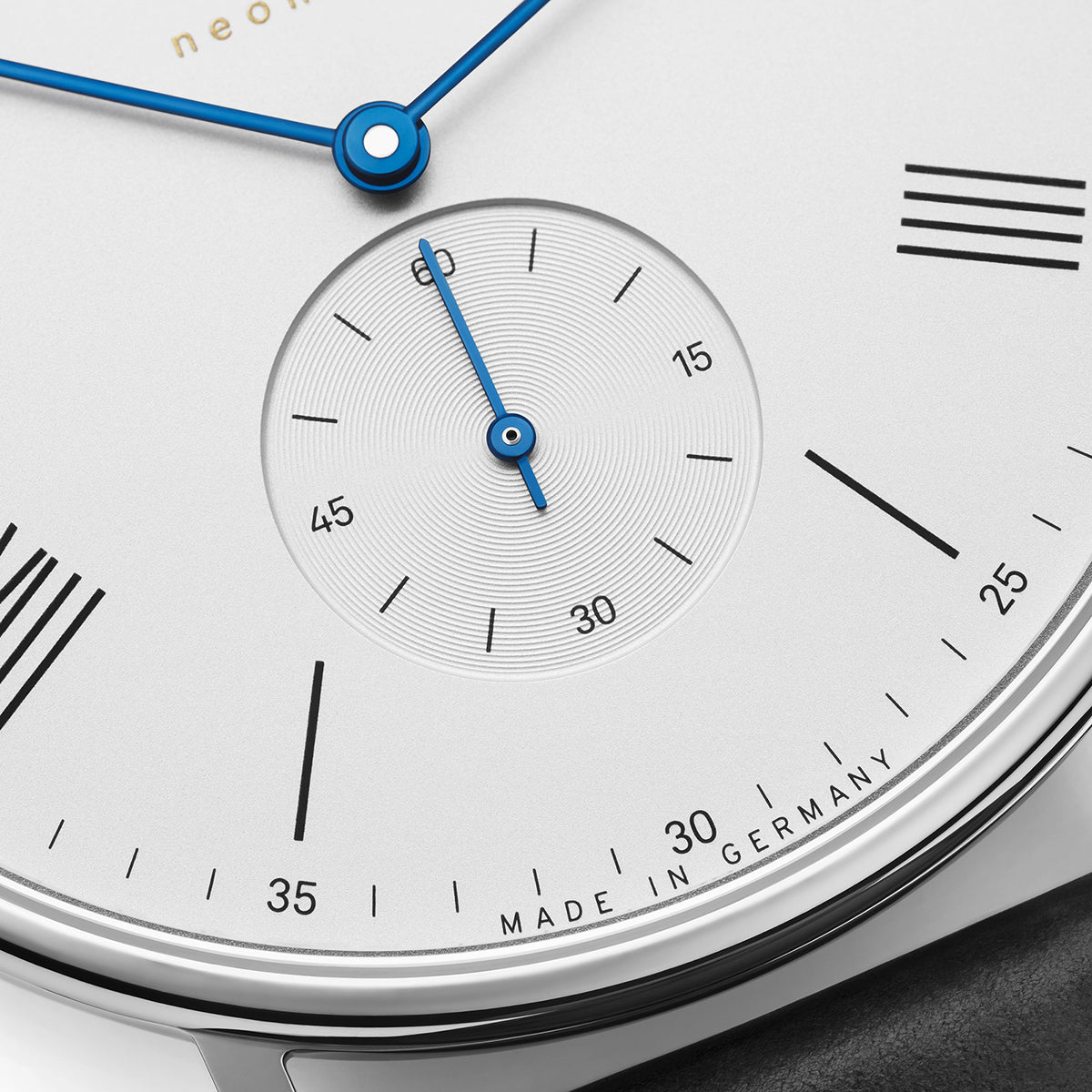

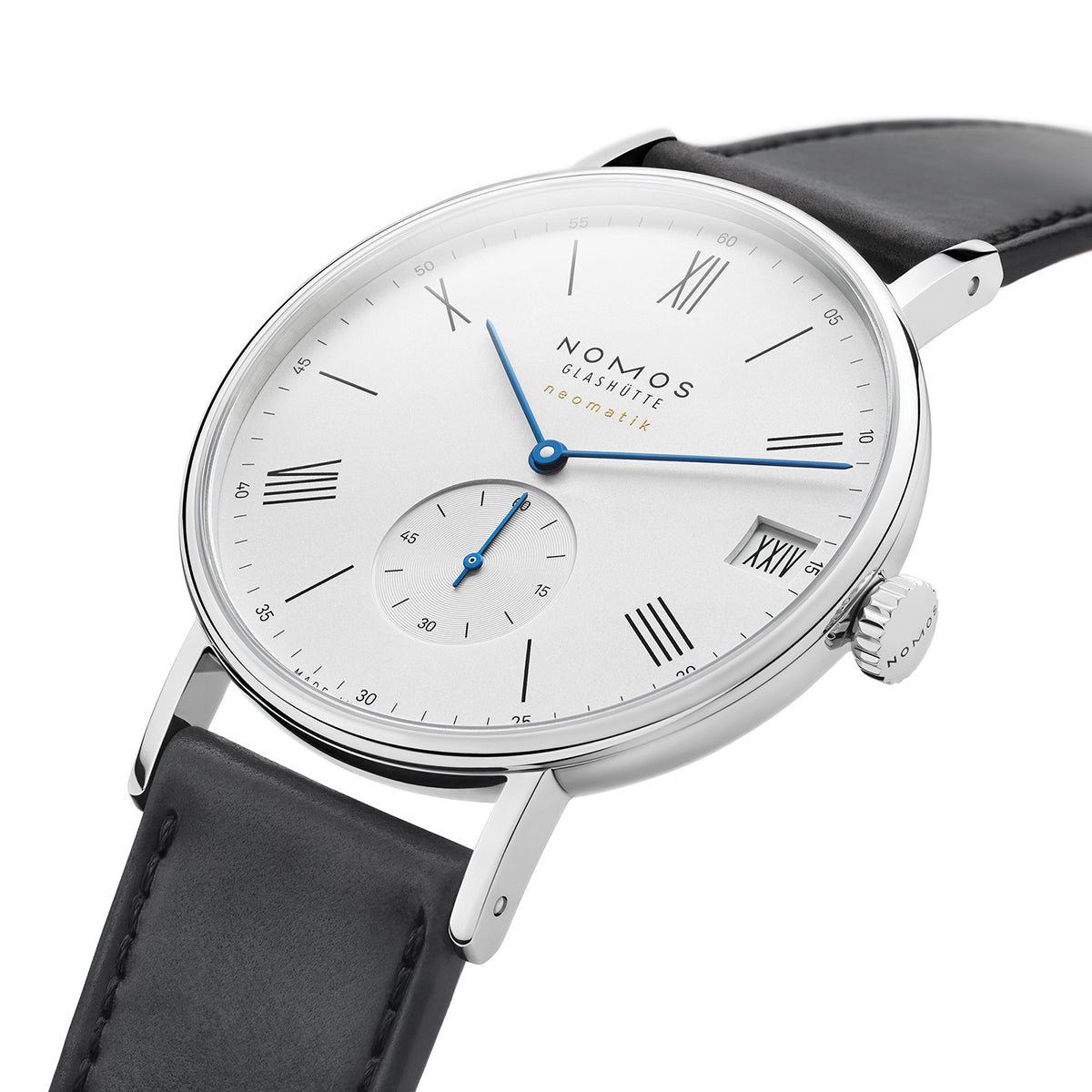
Ludwig neomatik 41 date - Copyright: NOMOS Glashütte
An inconvenient truth
Despite this being relatively well-known in watch circles, I still encounter long-time collectors who have never heard of this inconvenient truth. Remarkably (or perhaps not given how important a brand’s reputation is to its success), this shocking quirk of most instant date change mechanisms is rarely openly communicated.
If you study instruction manuals (which I suppose you should for every single device or mechanical instrument you purchase), you will find mention of it squirrelled away amidst pages and pages of fine print. However, many of us assume that any well-made product that requires no small amount of money to acquire will just work and be beyond the risk of damage through what could easily be described as “fair use”. Therefore, it’s totally understandable if you’ve never even thought to read a watch manual from cover to cover and, instead, chucked it into a drawer or a box, never again to see the light of day.
Knowing how many people are likely to do just that, it seems logical (albeit long overdue) that there might be at least one brand willing to take a blank-sheet-of-paper approach to the problem.
Enter NOMOS Glashütte and the brand’s groundbreaking DUW 6101 calibre.
The crest of a wave
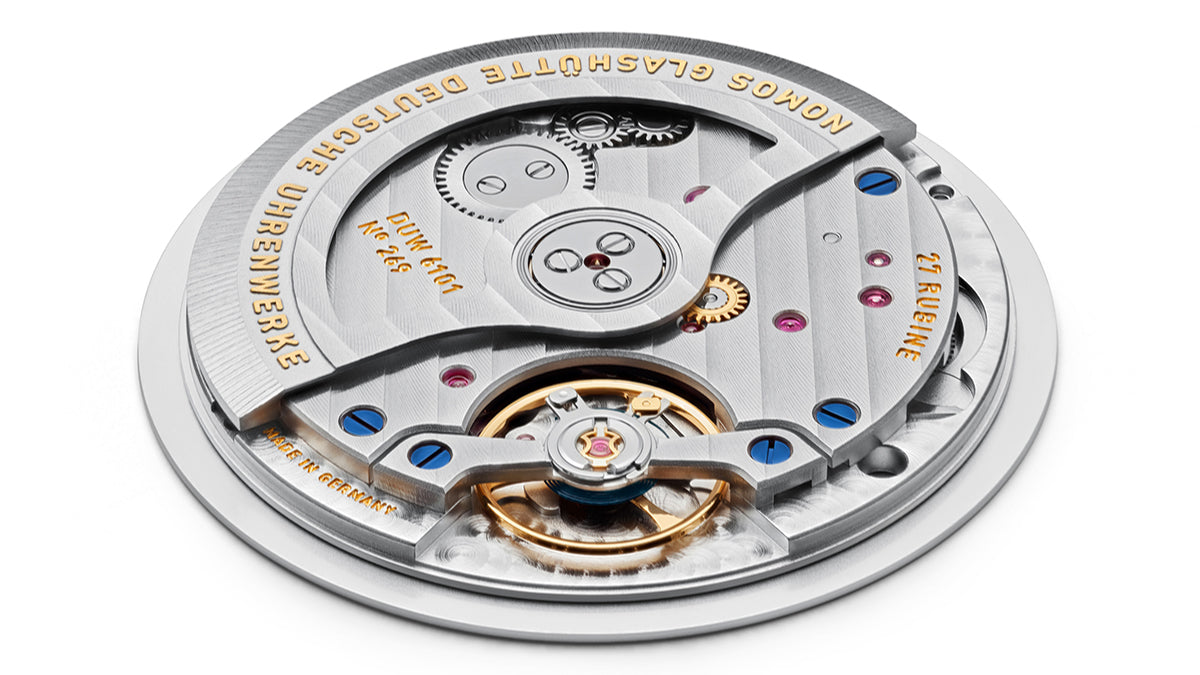 DUW 6101 - Copyright: NOMOS Glashütte
DUW 6101 - Copyright: NOMOS Glashütte
NOMOS Glashütte was, for many years after its 1990 foundation, one of the best-kept secrets of the watch industry. Under the guidance of founder Roland Schwertner, the brand skilfully navigated the fractious political landscape of early-nineties Germany and became one of the darlings of reunification.
While many brands in Glashütte, the nation’s capital of watchmaking, were built back to relevance on their various historical foundations, NOMOS was a new brand with a brand new vision: to bring classic Bauhaus design to the masses via affordable, Swiss-movement-powered watches.
The core collection released in 1992 comprised four model families. The Tangente (the brand’s enduring bestseller), the Orion, the Ludwig, and the Tetra. All four families still exist today. More significant still is the fact that the original four models are still available, although their modern iterations are fitted with in-house movements.
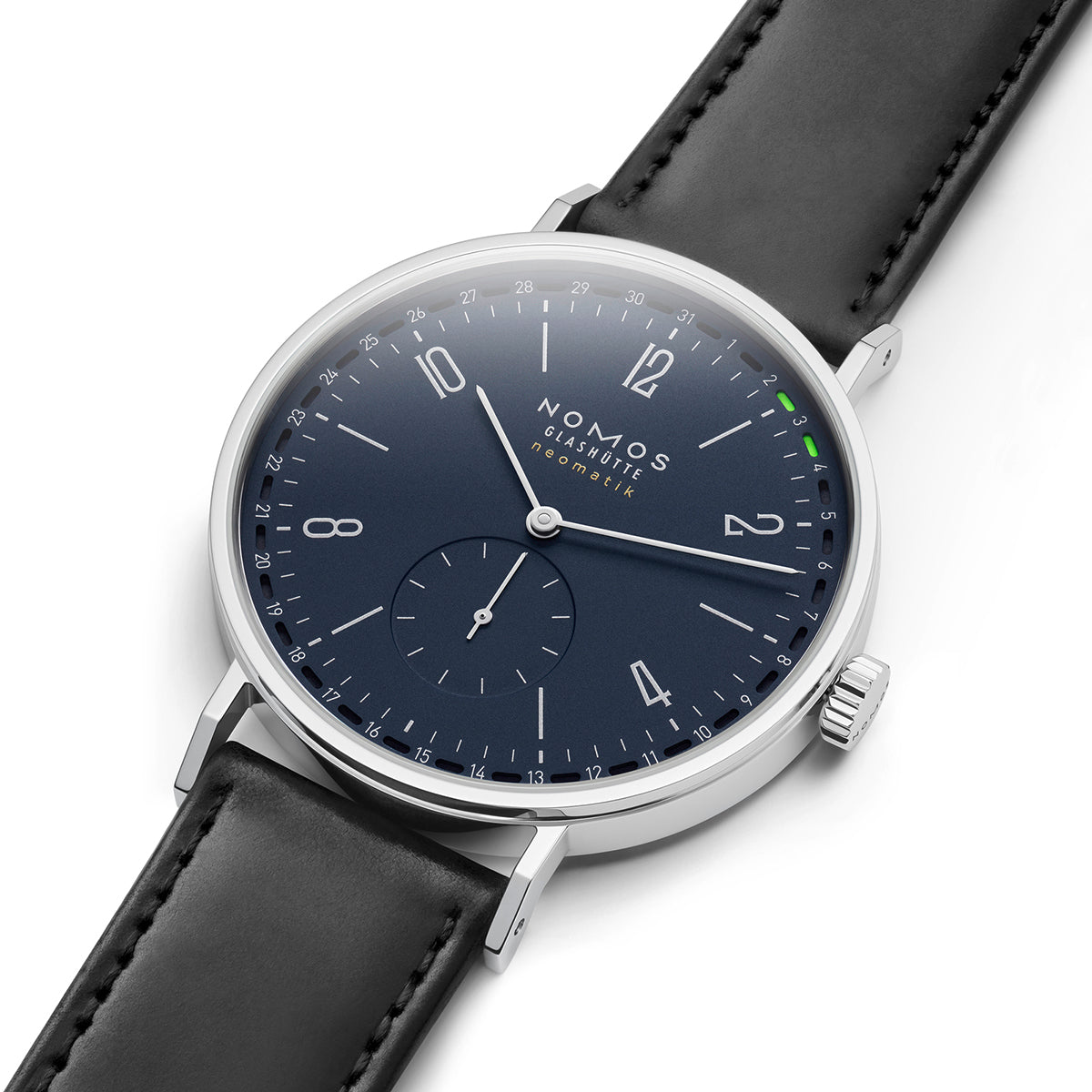
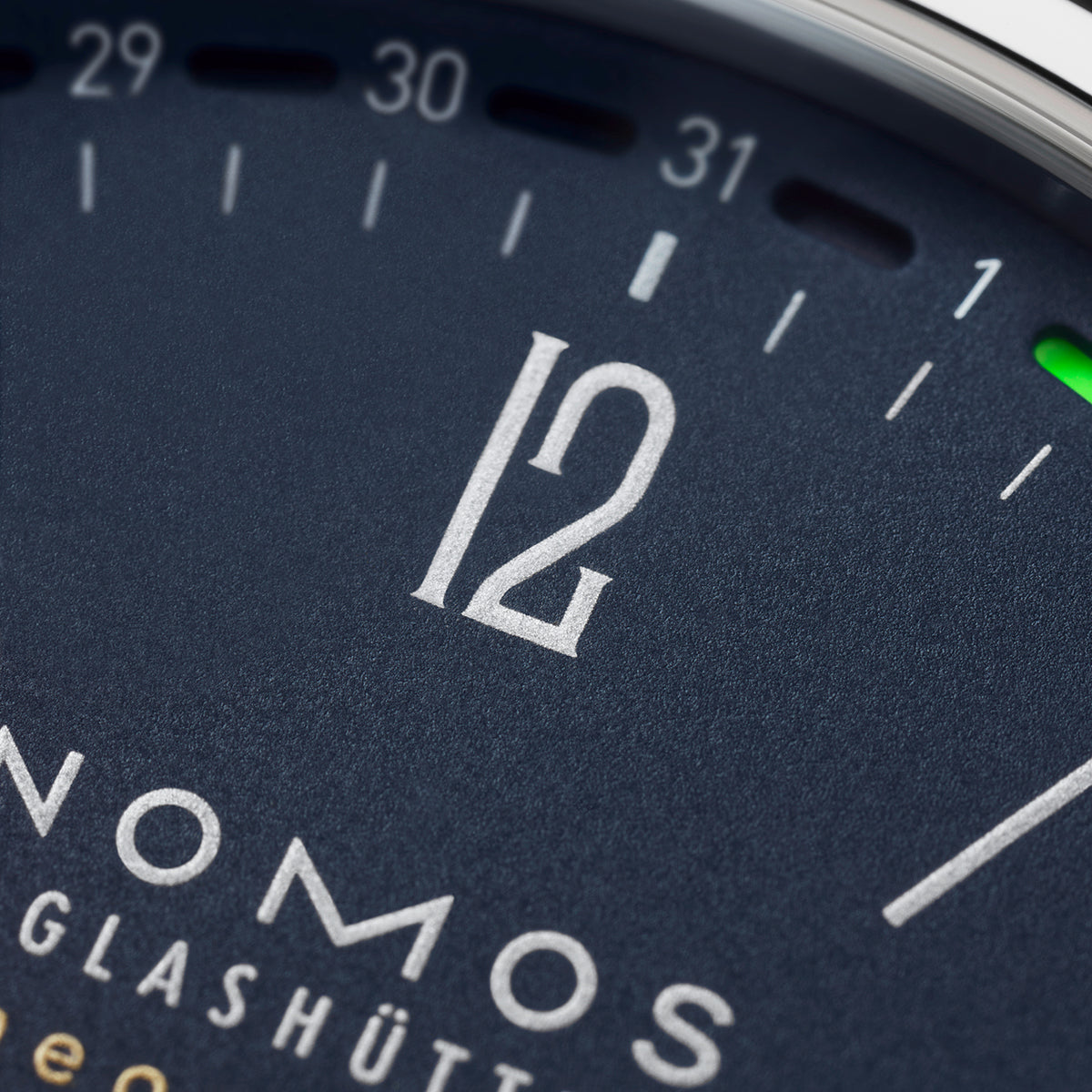
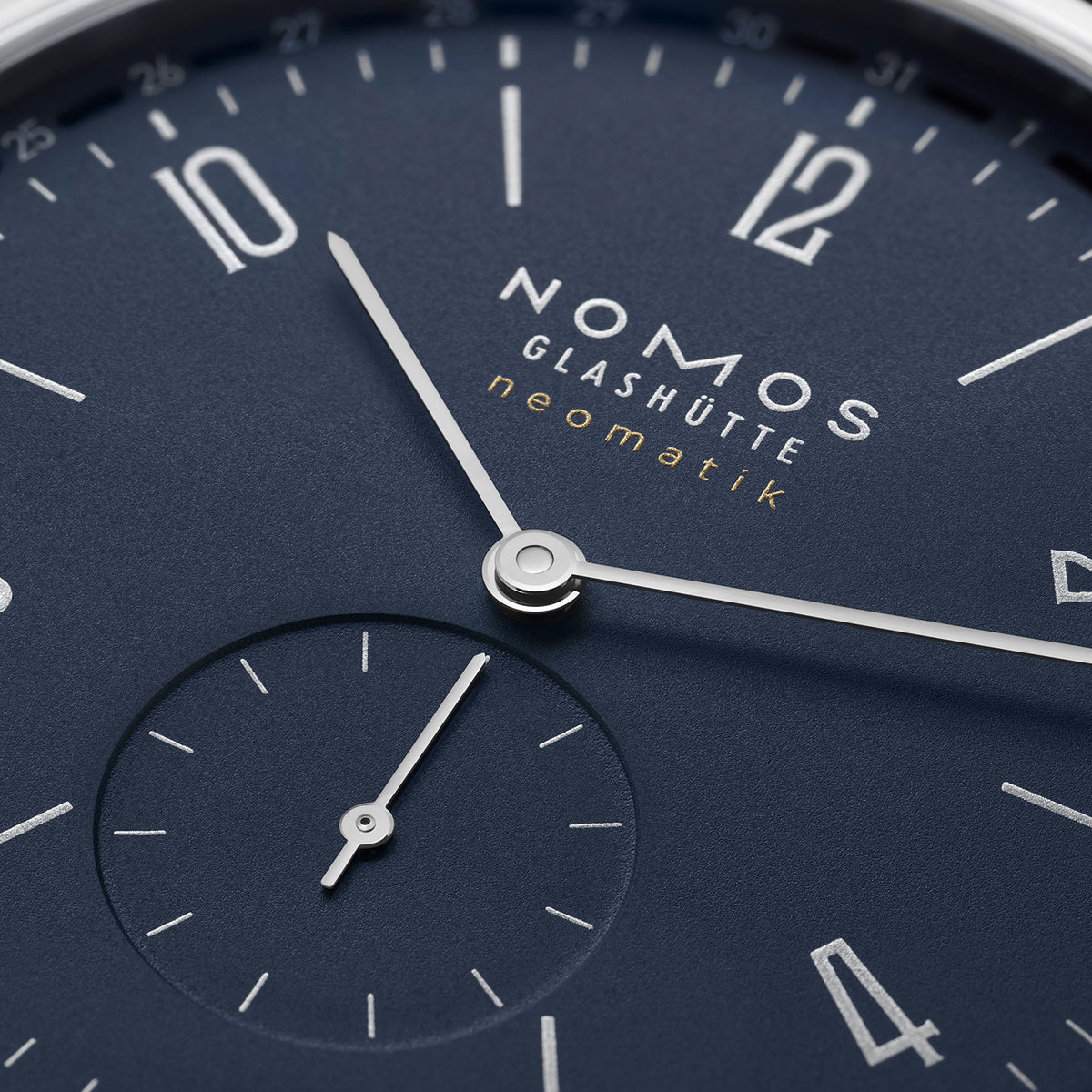

Tangente neomatik 41 Update midnight blue - Copyright: NOMOS Glashütte
That’s right, in-house movements. During the 2010s, NOMOS invested heavily in internalising production. The brand intended to pair its award-winning designs with Glashütte-made calibres. Remarkably, despite the many mountains the brand was forced to climb to make that dream a reality, it succeeded.
The crowning glory of that period was the 2015 release of the super slim DUW 3001 automatic calibre, that stood just 3.1 mm thick. It was envisaged as a foundational movement upon (and around) which new complications could be added without sacrificing the brand’s trademark slimness.
Naturally, the conversation quickly turned towards a date complication. NOMOS had released many date watches before but all using the legacy movement platform. Everyone assumed the DUW (which stands for Deutsche Uhrenwerk, or, in English, German watch movement) series would soon receive a date update; nobody assumed it would be as innovative an update as transpired.
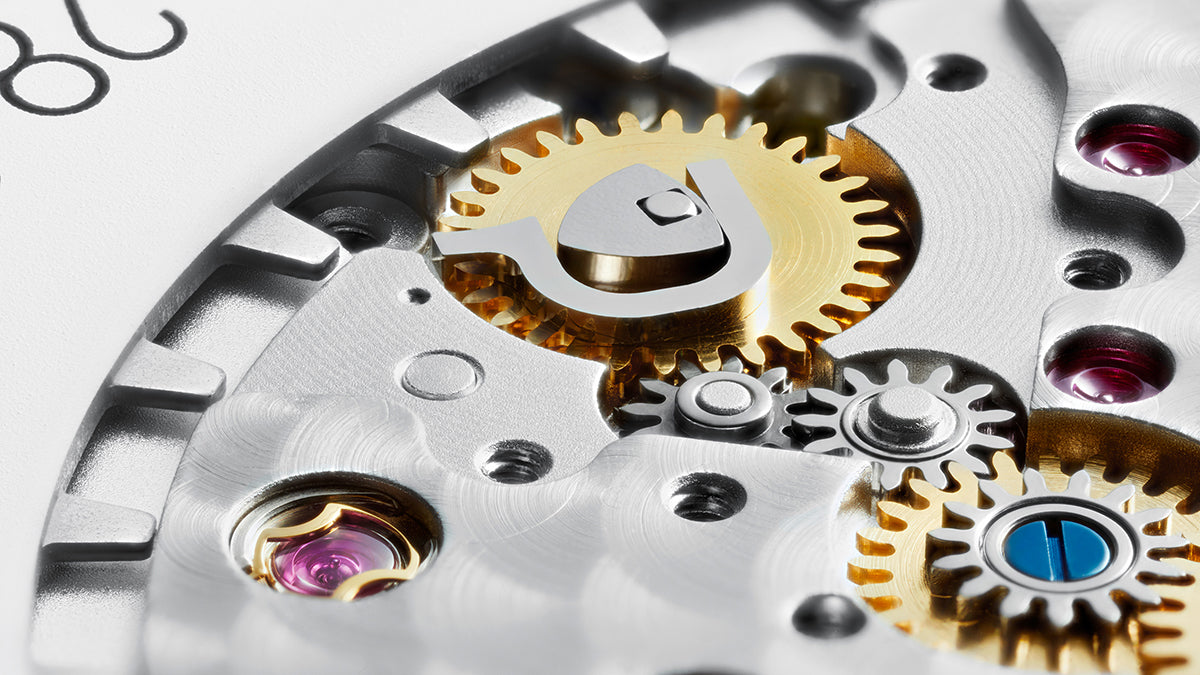 NOMOS Program Disk - Copyright: NOMOS Glashütte
NOMOS Program Disk - Copyright: NOMOS Glashütte
Before I address what makes the DUW 6101 “UpDate” so special, it is worth noting that, rather curiously, NOMOS was one of the few brands that never suffered from the “dead zone” problem discussed in this article. That’s because NOMOS watches never had a quickset date function until the DUW 6101 UpDate. Instead, NOMOS used a somewhat old-fashioned (but, I think, ingenious) alternative that is often referred to as a “semi-quickset” date.
A “semi-quickset” date requires the setter to wind the hands past midnight to advance the date, before winding the hands back to around 9/10 pm, reloading the “firing mechanism” in the process. The hands can then be wound forwards past midnight and the date will once again advance by one. This back-and-forth method vastly reduces the time necessary to set a date but is, of course, not as fast as a true quickset function.
But — and this is crucial — it is safe. It isn’t possible to damage a semi-quick setting mechanism. As such, when the time came for NOMOS to develop a date complication for its DUW platform, it wanted to retain the same safety feature but, if possible, add a true quickset function to the mix.
That’s where things got interesting.
A revolutionary solution

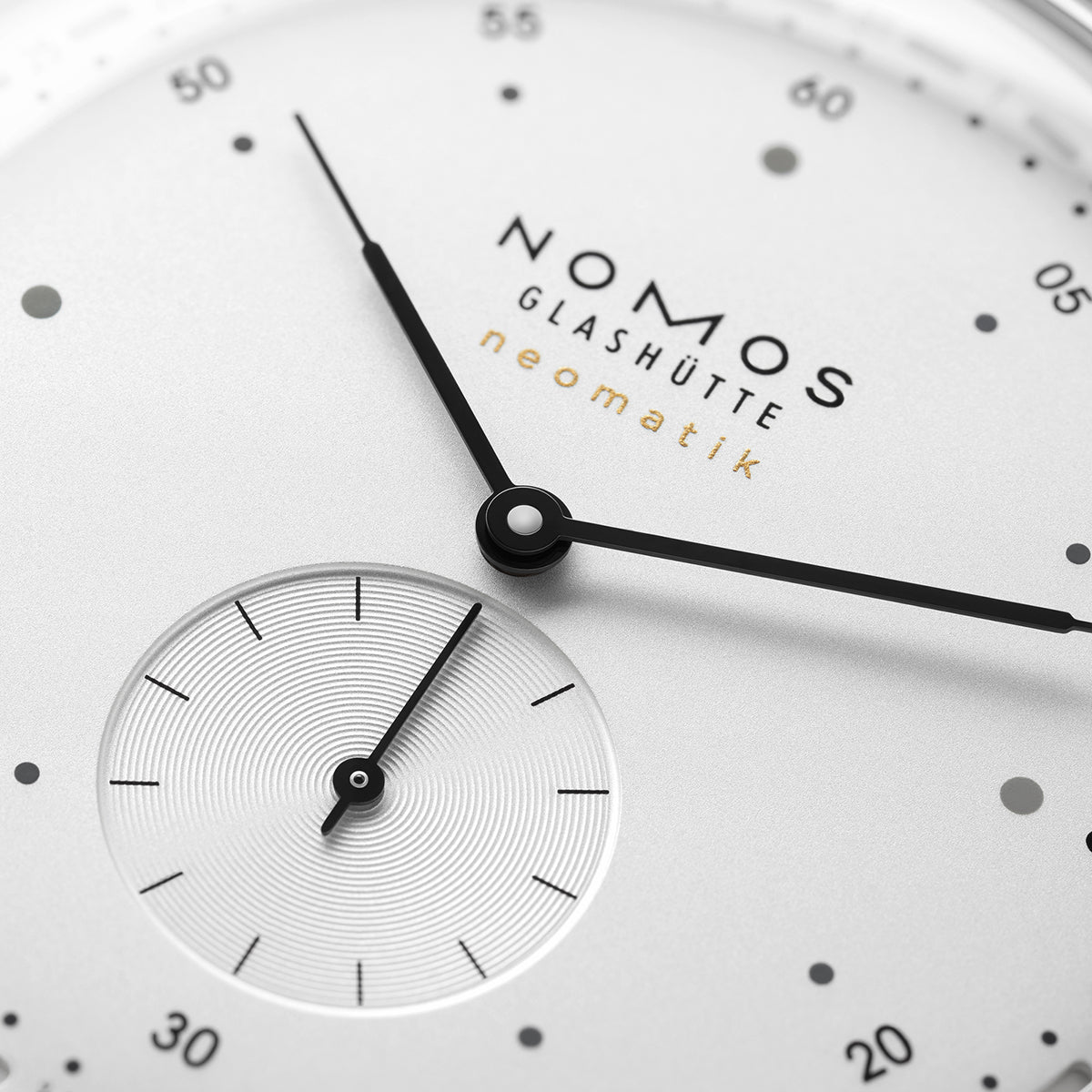

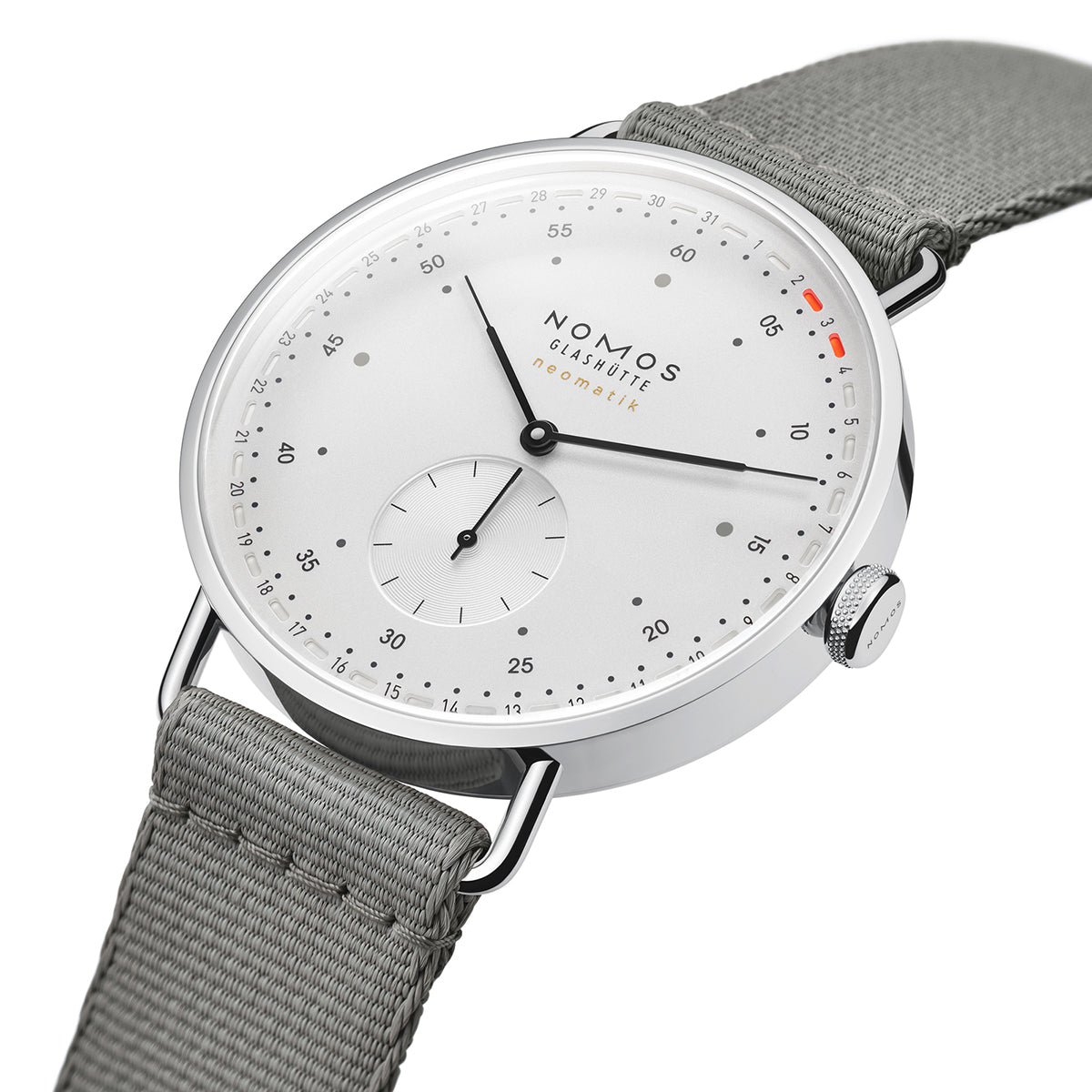
Metro neomatik 41 Update - Copyright: NOMOS Glashütte
This is an industry of hyperbole. I’m guilty of it myself (some would say criminally so). However, although exaggeration of the facts should always be avoided, it is harder to pin down whether someone’s reaction to a development or even a simple release is over the top or entirely genuine. That’s because those of us who love watches really love them. We’re not rational beings in that regard. And so allow me to say this: the date mechanism of the DUW 6101 is not simply a welcome addition to the collection; it has the potential to change the way date mechanisms around the industry are constructed.
Of course, it has now been several years since the DUW 6101 first hit the shelves and no brand I know of has effectively copied the NOMOS design, but perhaps that goes to show exactly how hard it is to execute or how expensive it is to build a movement around a simple but satisfying improvement on a time-honoured staple (however insufficient that staple may be).
The DUW 6101 employs what could be termed a “tension-activated slipping clutch” to prevent damage to the movement when a quickset is attempted within the dead zone (which remains roughly between the hours of 10 pm and 2 am). This is achieved by a double-level friction-fit wheel. The two friction fit levels of this wheel are able to turn independently from one another when tension is encountered.
 Neomatik date mechanism with quick correction feature - Copyright: NOMOS Glashütte
Neomatik date mechanism with quick correction feature - Copyright: NOMOS Glashütte
The bottom level is directly engaged with the setting work and the top level is directly engaged with the date mechanism. When the time is not between 10 pm and 2 am, very little pressure (less than the friction-fit connection of the double-level wheel) is needed to advance the date. When the jumping mechanism is engaged with the date wheel, however, the date wheel is under tension. When the top level of the double-level wheel engages with the date wheel under tension, too much force (more than the force of the friction fit between the top and lower levels of this setting wheel) would be needed to push the date wheel forward. Instead, this top level (which is shaped like a five-fingered star) is prevented from advancing. If you continue to turn the crown, the lower wheel will spin freely beneath the star wheel above it. That means that within the dead zone, you cannot change the date but you cannot break it.
Simple but sublime. That’s the magic of the ultra-safe, ultra-slim, ultra-unusual NOMOS Glashütte DUW 6101.





